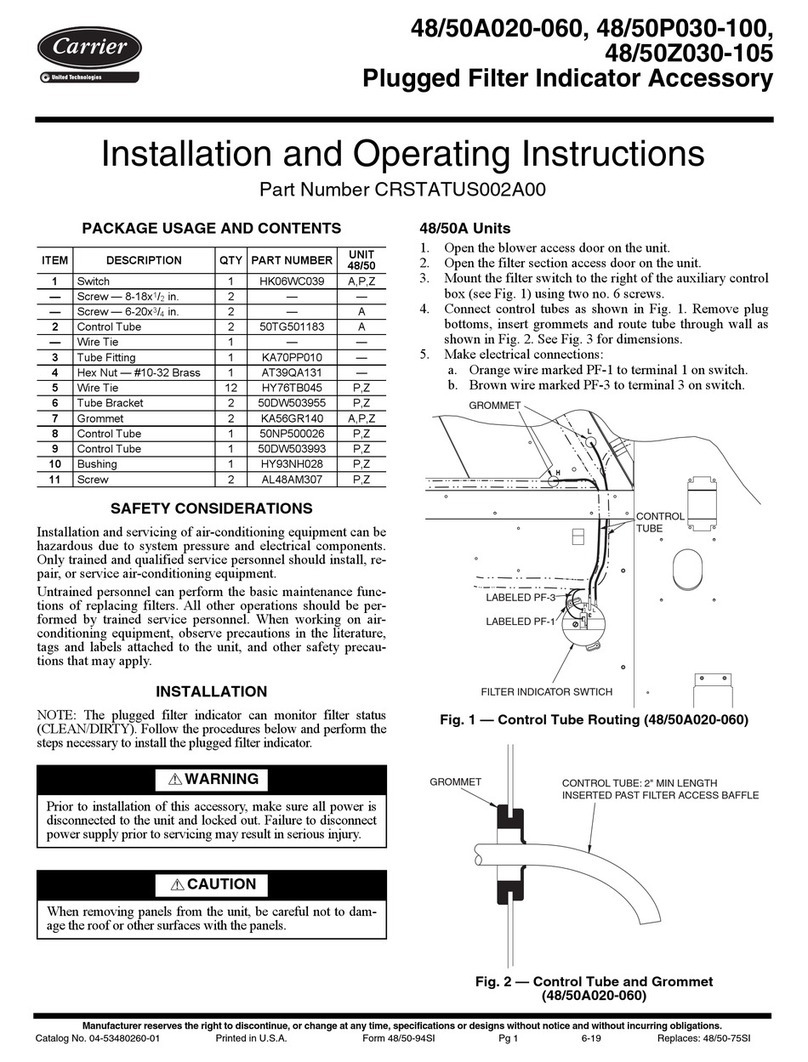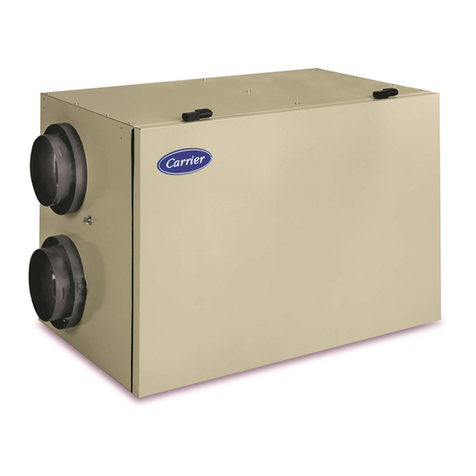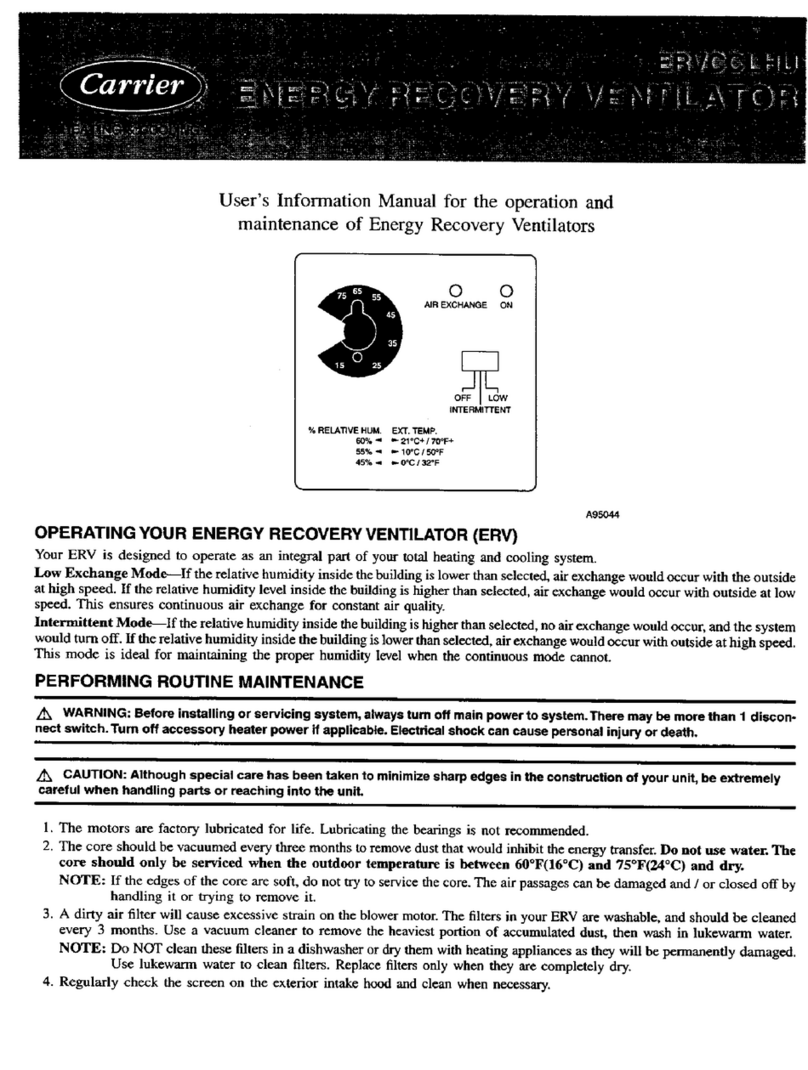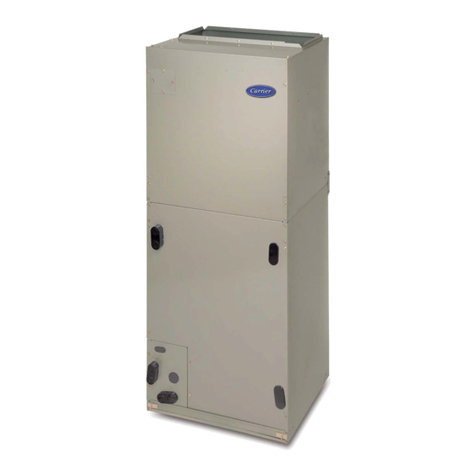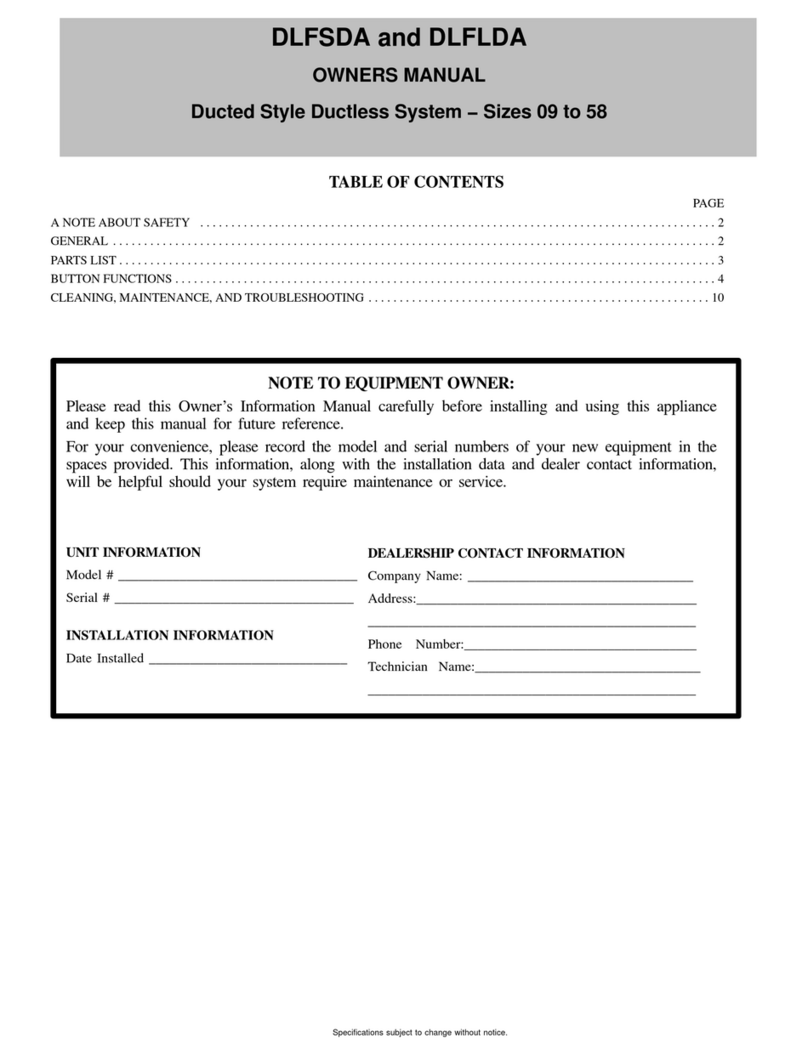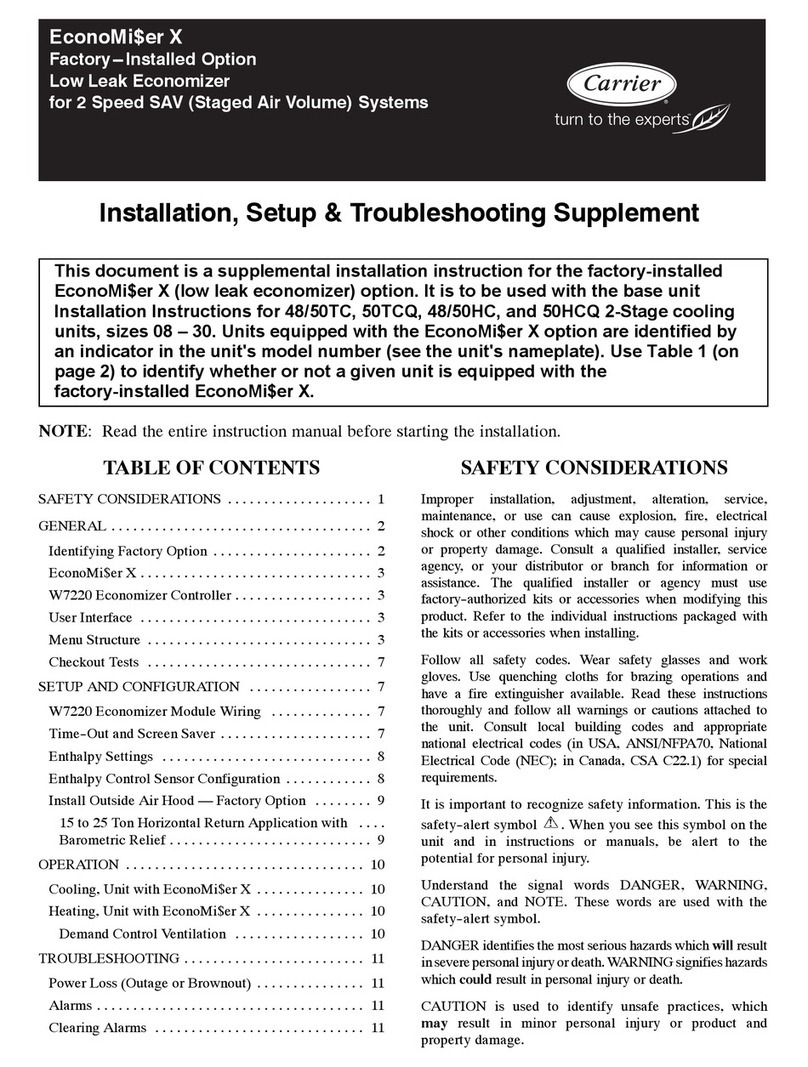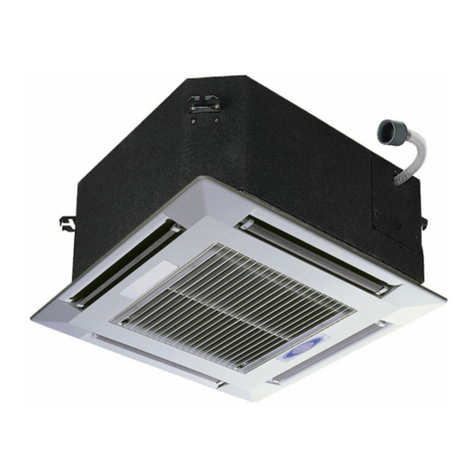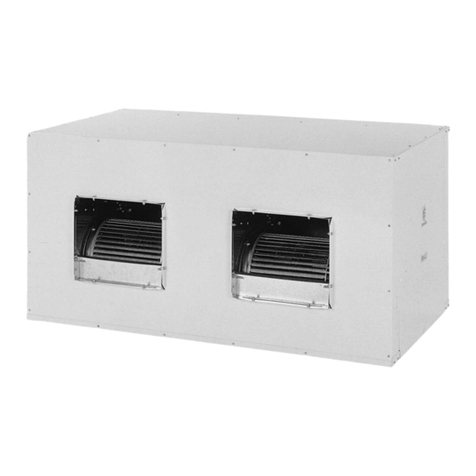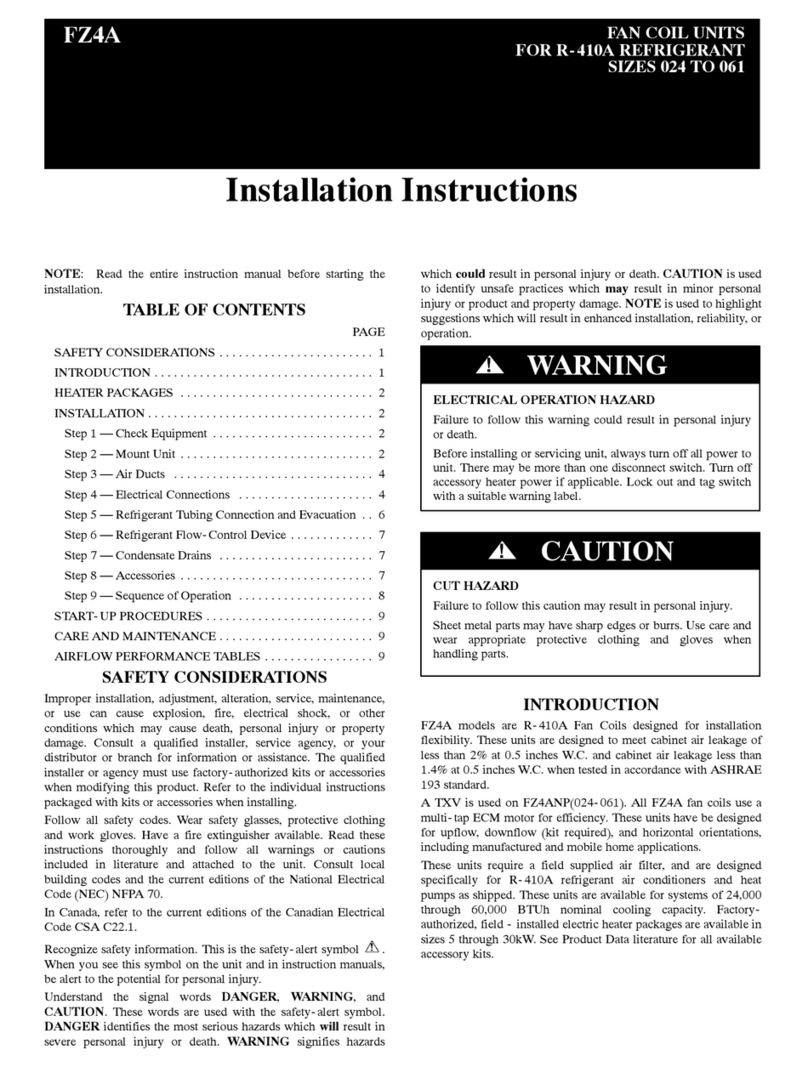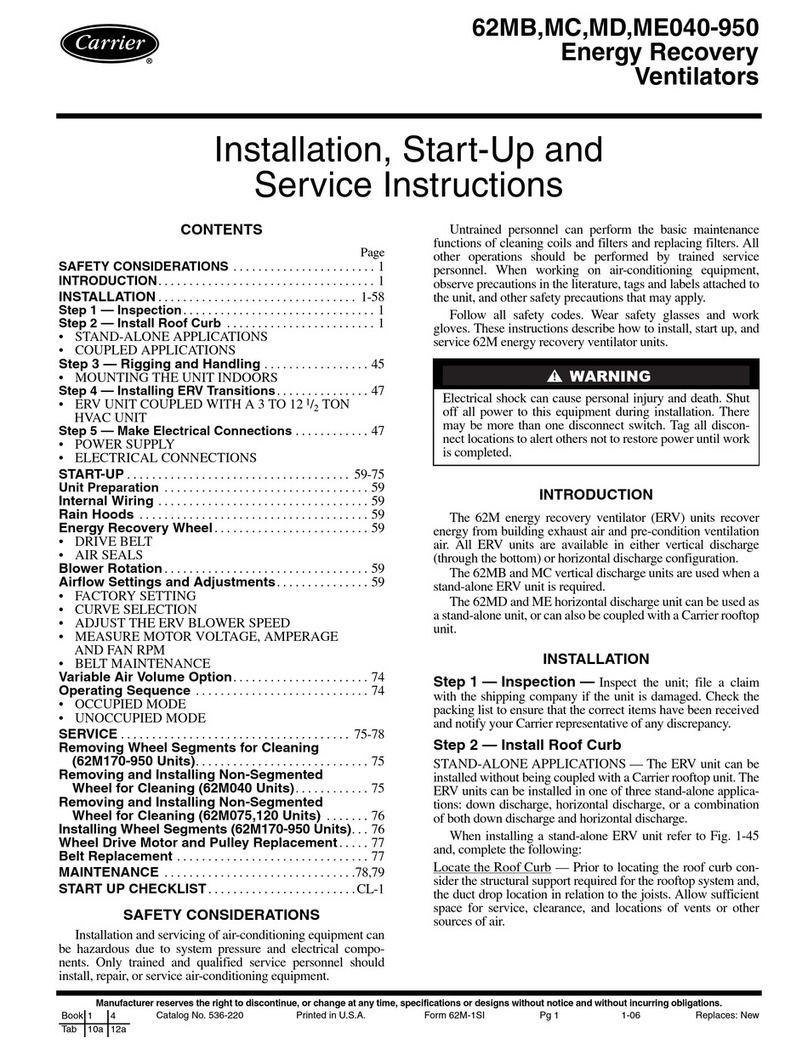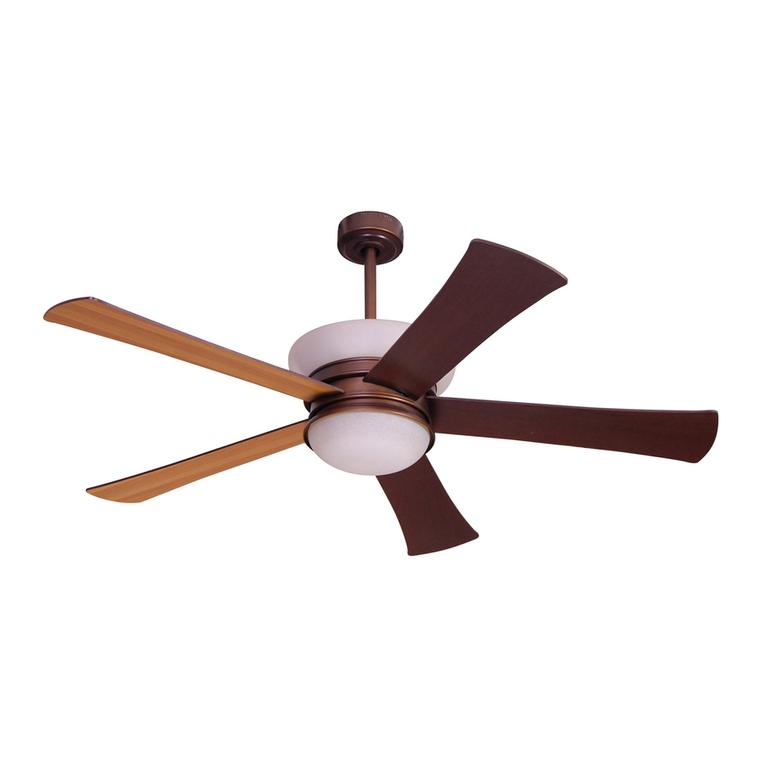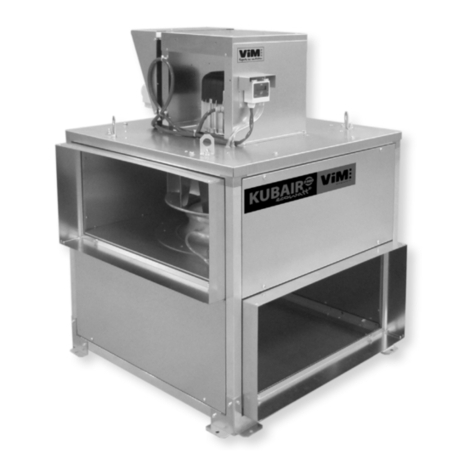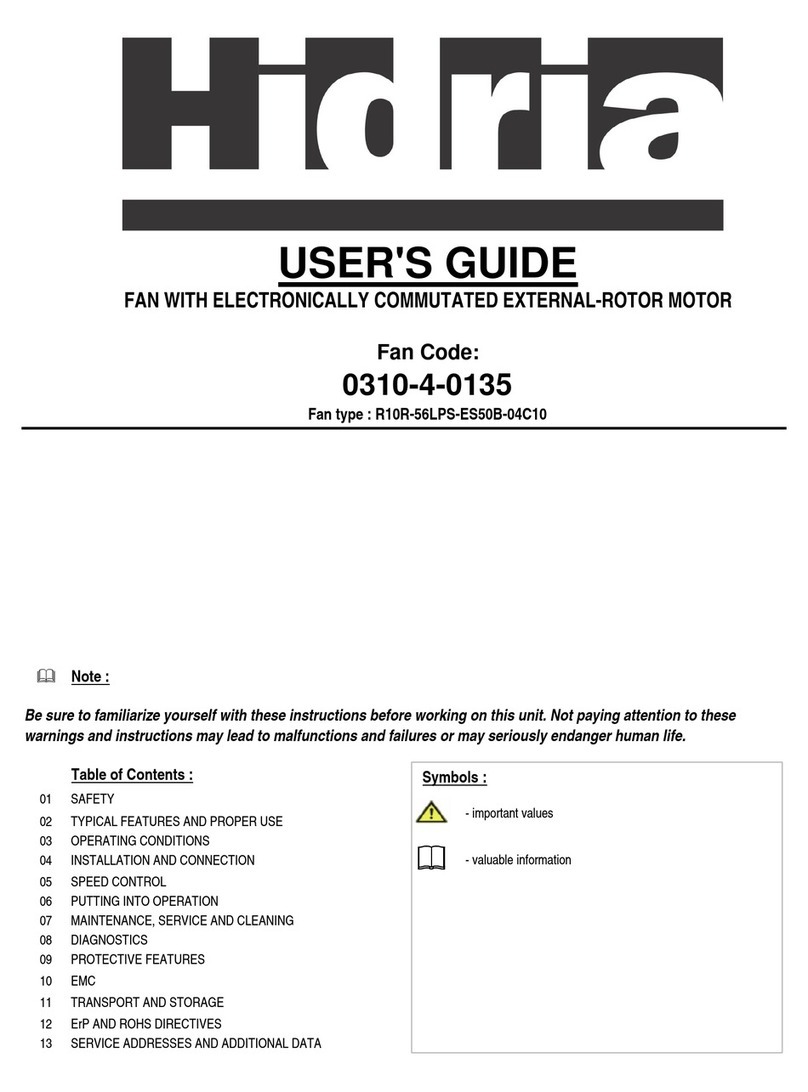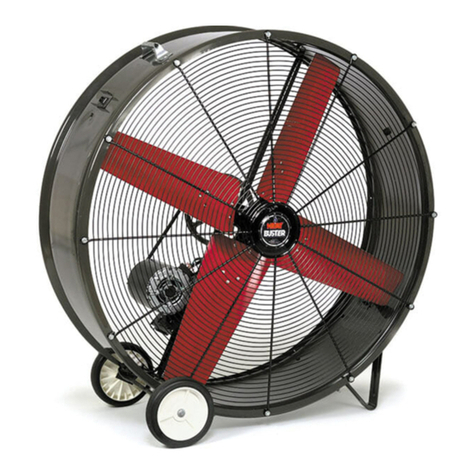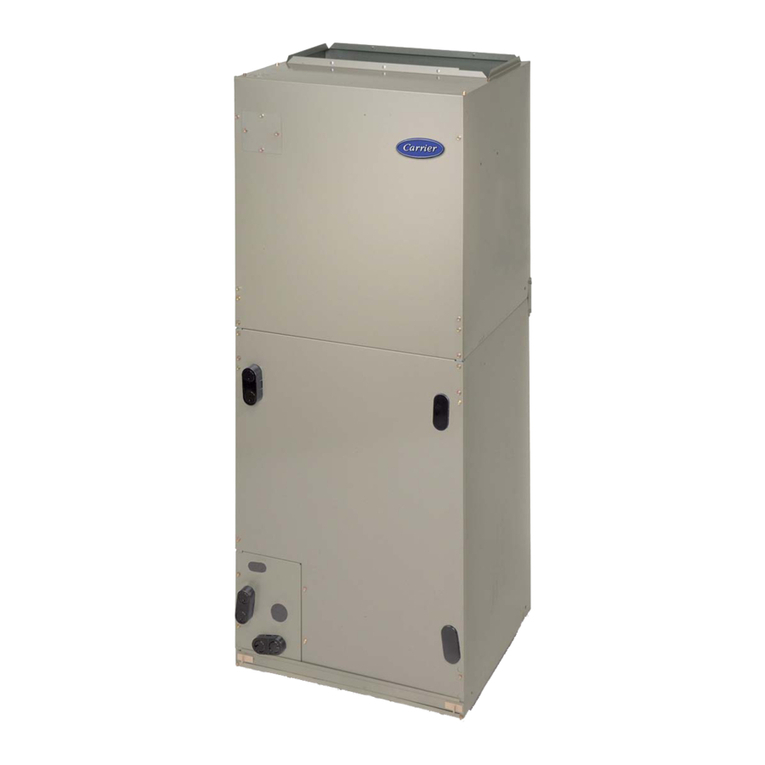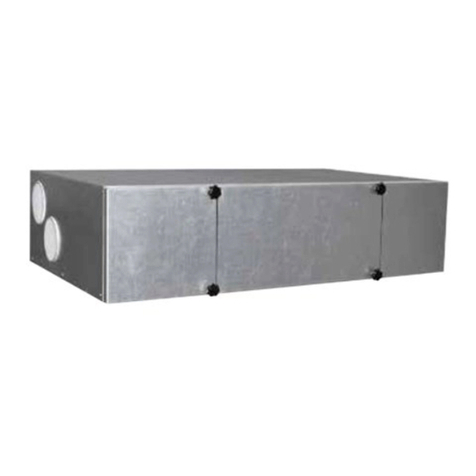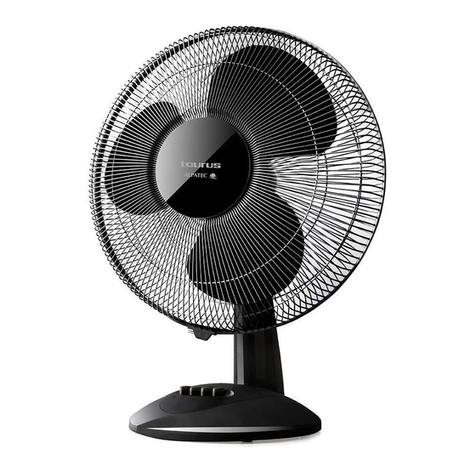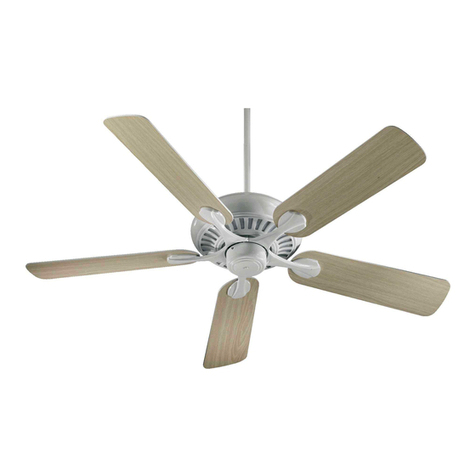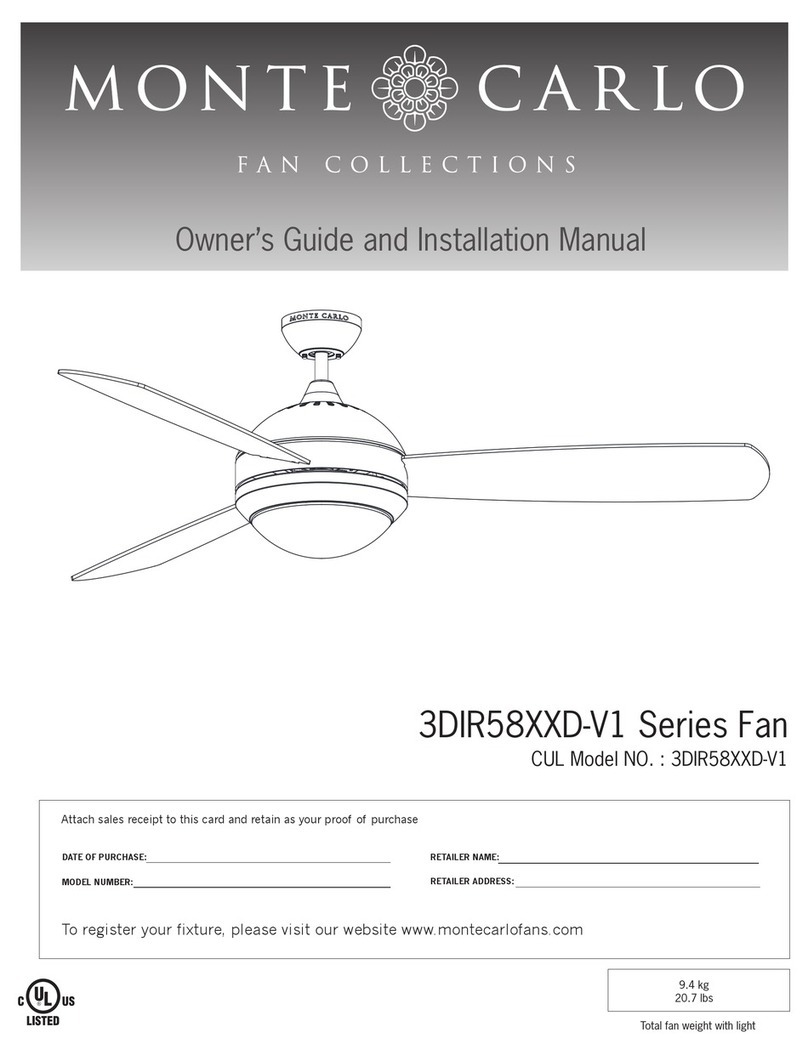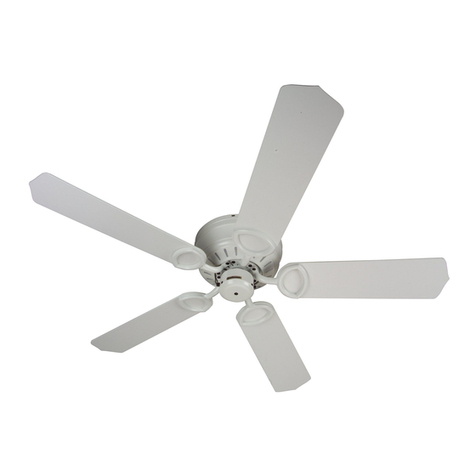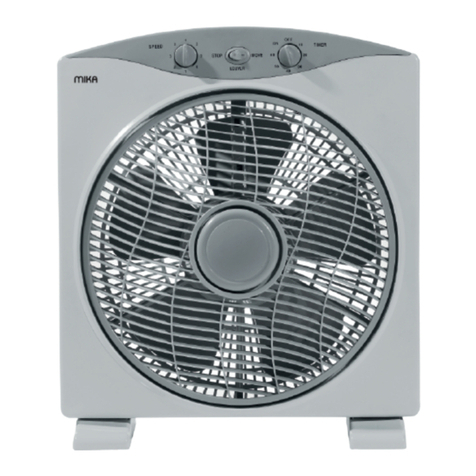
1
Installation Instructions
Read these instructions completely before attempting to install the
Vertical EconoMi$er X Accessory.
CONTENTS
SAFETY CONSIDERATIONS . . . . . . . . . . . . . .1
GENERAL. . . . . . . . . . . . . . . . . . . . . . . . . . . . . 1
EconoMi$er X Sensor Usage . . . . . . . . . . . . . 2
ACCESSORIES LIST. . . . . . . . . . . . . . . . . . . . .2
INSTALLATION . . . . . . . . . . . . . . . . . . . . . . . 2-5
EconoMi$er X Standard Sensors . . . . . . . . . .5
EconoMi$er X Control Modes . . . . . . . . . . 5-11
OPERATION . . . . . . . . . . . . . . . . . . . . . . . . . . 12
TROUBLESHOOTING . . . . . . . . . . . . . . . . . . 13
SAFETY CONSIDERATIONS
Improper installation, adjustment, alteration, service, maintenance, or
use can cause explosion, re, electrical shock or other conditions which
may cause personal injury or property damage. Consult a qualied
installer, service agency, or your distributor or branch for information or
assistance. The qualied installer or agency must use factory-authorized
kits or accessories when modifying this product. Refer to the individual
instructions packaged with the kits or accessories when installing.
Follow all safety codes. Wear safety glasses and work gloves. Use
quenching cloths for brazing operations and have a re extinguisher
available. Read these instructions thoroughly and follow all warnings
or cautions attached to the unit. Consult local building codes and
appropriate national electrical codes (in USE, ANSI/NFPA70, National
Electrical Code (NEC); in Canada, CSA C22.1) for special requirements.
It is important to recognize safety information. This is the safety-alert
symbol . When you see this symbol on the unit and in instructions or
manuals, be alert to the potential for personal injury.
Understand the signal words DANGER, WARNING, CAUTION, and
NOTE. These words are used with the safety-alert symbol.
DANGER identies the most serious hazards which will result in severe
personal injury or death. WARNING signies hazards which could
result in personal injury or death.
CAUTION is used to identify unsafe practices, which may result in
minor personal injury or product and property damage.
NOTE is used to highlight suggestions which will result in enhanced
installation, reliability, or operation.
GENERAL
The EconoMi$er X system utilizes the latest technology available
for integrating the use of free cooling with mechanical cooling for
packaged rooftop units. The solid-state control system optimizes energy
consumption, zone comfort, and equipment cycling by operating the
compressors when the outdoor-air temperature is too warm, integrating
the compressor with outdoor air when free cooling is available, and
locking out the compressor when outdoor-air temperature is too cold.
Demand control ventilation is supported.
Units displaying 17th position of the model number to indicate that the
unit is equipped with the factory-installed VFD (Variable Frequency
Drive) option for 2-speed indoor fan control. The VFD option is required
for units equipped with EconoMi$er X. For detailed information on the
VFD see the Variable Frequency Drive (VFD) Installation, Setup and
Troubleshooting Supplement.
The EconoMi$er X system utilizes gear-drive technology with a direct-
mount spring return actuator that will close upon loss of power. The
EconoMi$er X system comes standard with an outdoor air temperature
sensor, mixed air temperature sensor. Outdoor enthalpy, indoor enthalpy,
and CO2 sensors are available for eld installation. See Table 3 for
sensor usage.
IMPORTANT: The economizer outside air dampers meet the ASHRAE
90.1 leakage requirements. Economizer must be installed perfectly
square to avoid damper leakage. Squareness tolerance +/- 1/32”.
Standard barometric relief dampers provide natural building pressurization
control. An optional power exhaust system is available for applications
requiring even greater exhaust capabilities. The power exhaust set point
is adjustable at the EconoMi$er X controller.
See Table 1 for package usage. See Table 2 for package contents. See
Table 3 for sensor usage.
ACCESSORIES LIST
WARNING
ELECTRICAL SHOCK HAZARD
Failure to follow this warning could cause personal injury or death.
Before performing service or maintenance operations on the unit,
always turn off main power switch to unit and install lock(s) and
lockout tag(s). Unit may have more than one power switch. Ensure
electrical service to rooftop unit agrees with voltage an amperage
listed on the unit rating plate.
CAUTION
CUT HAZARD
Failure to follow this caution may result in personal injury.
Sheet metal parts may have sharp edges or burrs. Use care and wear
appropriate protective clothing, safety glasses and gloves when
handling parts and servicing roof top units.
!
!
Table 1 - Package Usage
Table 2 - Package Contents
UNIT SIZE PART NUMBER
Small Cabinet,
Footprint size: 46 3/4” x 74 3/8” CRECOMZR067A02
Large Cabinet,
Footprint size: 58 1/2” x 88 1/8” CRECOMZR069A03
Extra-Large Cabinet,
Footprint size: 63 3/8” x 115 7/8” CRECOMZR071A00
PACKAGE NO. QTY CONTENTS
CRECOMZR067A00,
CRECOMZR069A00
1
1
1
18
1
1
Hood Top and Sides
Hood Divider
Aluminum Filter
Screws
EconoMi$er X Assembly
Mixed Air Temperature Sensor
CRECOMZR071A00
1
1
1
2
1
1
1
Hood Top and Sides
Hood Divider
Hood Filter Divider
Aluminum Filters
Hardware Bag
EconoMi$er X Assembly
Mixed Air Temp Sensor
Small Rooftop Products
3 to 12 ½ Tons
Vertical EconoMi$er X Accessory
CRECOMZR067A00
CRECOMZR069A00
CRECOMZR071A00
!
